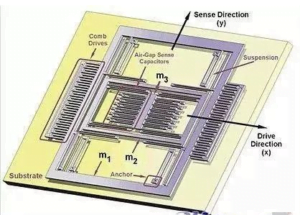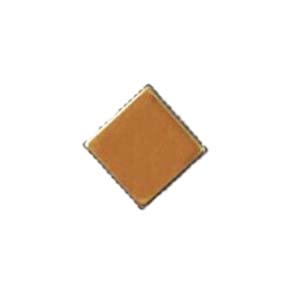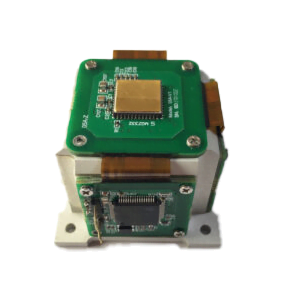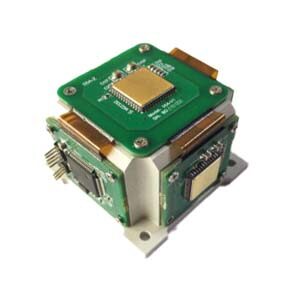For the angular velocity sensor, many people may be relatively unfamiliar with, but when mentions another name - gyroscope, I believe many people know.
The principle of the gyroscope
Gyroscope is a kind of device used to sense and maintain direction, which is designed based on the theory of angular momentum. Once a gyroscope begins to spin, it has a tendency to resist direction change due to the angular momentum of the wheel.
Generally, the direction pointed by the axis of rotation of a rotating body does not change unless it is affected by an external force. If you've ever played with a top, you know that when a spinning top encounters an external force, the direction of its axis doesn't change with the direction of the external force. We actually use this principle when we ride a bicycle. The faster a wheel spins, the less likely it is to fall over, because the axis has a force that keeps it level.
According to this principle, people use it to keep the direction, the creation of something called a gyroscope, and then in a variety of ways to read the axis indicated by the direction, and automatically send data signals to the control system.
The basic components of a gyroscope include
1. Gyro rotor (synchronous motor, hysteresis motor, three-phase AC motor and other drag methods are often used to make the gyro rotor rotate around the spin axis at high speed, and see its speed is approximately constant).
2. The inner and outer frame (or the inner and outer ring, which is the structure that makes the gyro spin axis obtain the required angular rotation degree of freedom).
3. Accessories (refers to torque motor, signal sensor, etc.).
Two important characteristics of gyroscopes
Gyroscope has two very important basic properties: one is fixed axis, the other is precession, both of which are based on the principle of conservation of angular momentum.

Axiality
When the gyro rotor rotates at a high speed, without any external torque acting on the gyroscope, the direction of the gyroscope's spin axis in inertial space remains stable, that is, it points to a fixed direction. And resist any force that changes the axis of the rotor. This physical phenomenon is called fixed-axis or stability of the gyroscope.
Its stability varies with the following physical quantities:
1. The larger the moment of inertia of the rotor, the better the stability;
2. The greater the rotor angular speed, the better the stability.
The so-called "moment of inertia" is a physical quantity that describes the inertia of a rigid body in rotation. When the same torque is applied to two different rigid bodies rotating about a fixed axis, the angular velocities they obtain are generally different. The rigid body with a large moment of inertia has a small angular velocity, that is, the inertia to maintain the original rotational state is large. Conversely, a rigid body with a small moment of inertia has a large angular velocity, which means that the inertia to maintain the original rotational state is small.
Precession
When the rotor rotates at high speed, if the external torque acts on the outer ring axis, the gyroscope will rotate around the inner ring axis. If the external torque is applied to the inner ring axis, the gyroscope will rotate about the outer ring axis. The direction of rotational angular velocity is perpendicular to the direction of external torque. This property is called precession of the gyroscope.
Precession is influenced by three factors:
1. The greater the external force, the greater the precession angular velocity;
2. The larger the moment of inertia of the rotor, the smaller the precession angular velocity;
3. The greater the angular velocity of the rotor, the smaller the precession angular velocity.
Silicon micro-electromechanical gyroscopes. Most MEMS gyroscopes rely on alternating Coriolis forces caused by mutually orthogonal vibrations and rotations. Micro-Electro-Mechanical Systems (MEMS) are complete micro-electromechanical systems integrating mechanical elements, micro-sensors, micro-actuators, signal processing and control circuits, interface circuits, communication and electrical sources.
MEMS gyroscope converts the angular velocity of a rotating object into DC voltage signals proportional to the angular velocity by Coriolis theorem. The core components of MEMS gyroscope are mass-produced by doping, lithography, corrosion, LIGA and packaging technologies.

Its main features:
1. Small size, light weight, its side length is less than 1mm, the weight of the device core is only 1.2mg.
2. Low cost.
3. Good reliability, life span can reach up to 100,000 hours, resist 1000g shock.
4. The measurement range is wide.
More than a hundred years ago, Leon Foucault invented the gyroscope for scientific research. Now, this little thing has turned our lives upside down. Gyro instrument can not only be used as indicator, but can be used as a sensitive element in automatic control system, which can be used as signal sensor.
According to needs, gyroscopic instruments can provide accurate signals such as azimuth, level, position, speed and acceleration, so that pilots or automatic navigators can control aircraft, ships or space shuttles to fly according to a certain course, and in the guidance of missiles, satellite vehicles or space exploration rockets and other vehicles, These signals can be used directly to control the attitude and orbit of the vehicle.
Gyroscopic instruments can be used as stabilizers to keep trains on the monorail, to reduce the sway of ships in wind and waves, to stabilize cameras mounted on aircraft or satellites relative to the ground, and so on.
As a precision test instrument, gyro instruments can provide accurate bearing datums for surface installations, mine tunnels, underground railroads, oil drilling, and missile silos.
Without it, there would be no airplane, no rocket, and no modern life, which is probably not his inventors thought. The little gyroscope makes our world a better place.
Ericco’s ER-MG2-100 is a north seeking mems gyro, its main features are as follows:
1. 0.02°/hr bias instability;
2. 0.005°/√hr angular random walk;
3. Small size 11 x 11 x 2mm.
If you want to get more technical data, please contact us.
More Technical Questions
1.How accurate is MEMS gyroscope?
2.Where are MEMS Gyroscopes Used?
4.Analysis of the main performance parameters of MEMS gyroscope
5.How to Distinguish MEMS Accelerometer and MEMS Gyroscope Correctly?
6.MEMS gyroscopes, accelerometers and magnetometers
Products in Article
.jpg)
High-temperature North Seeking MEMS Gyro For Gyro Tools(125°C)






